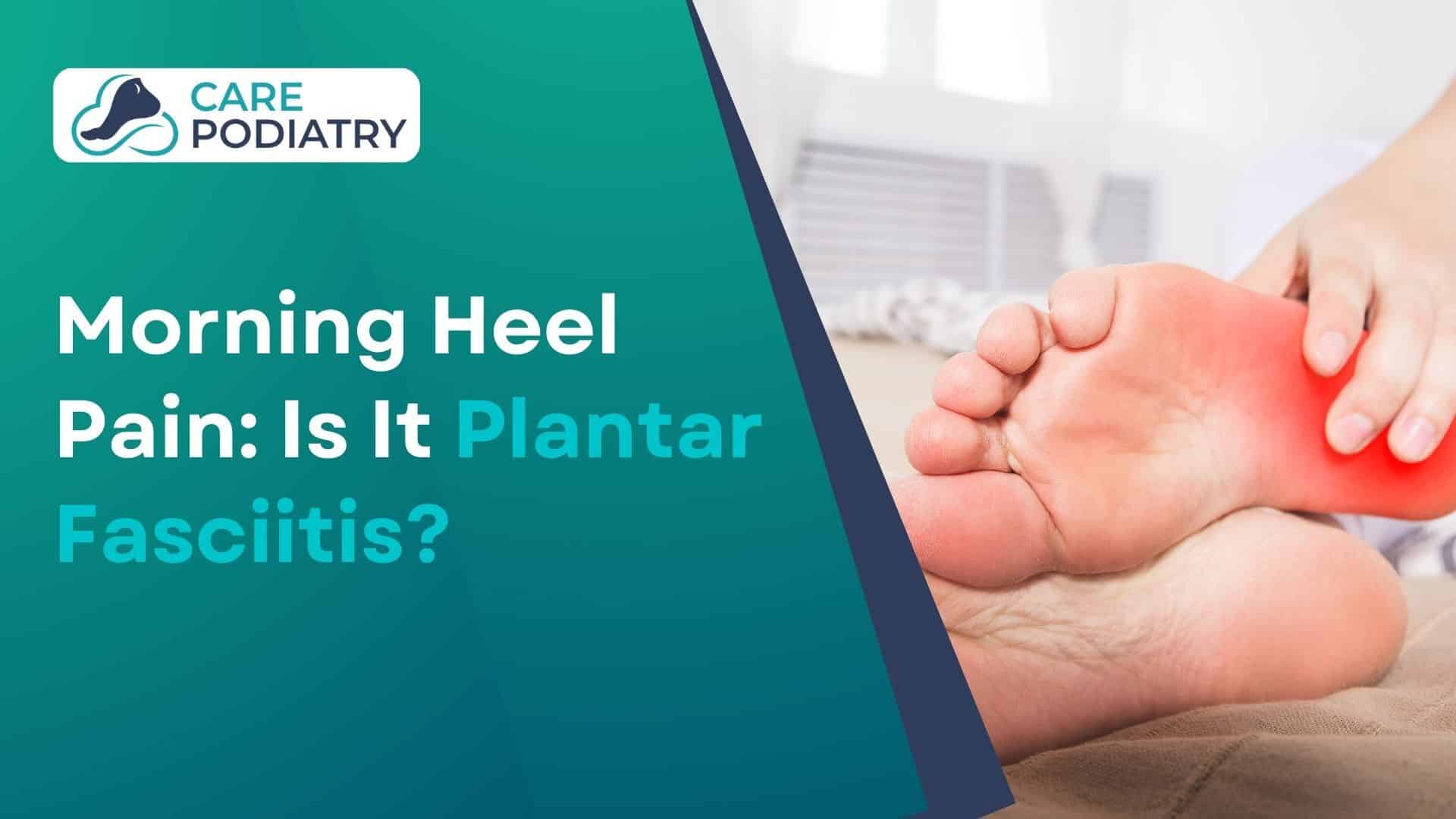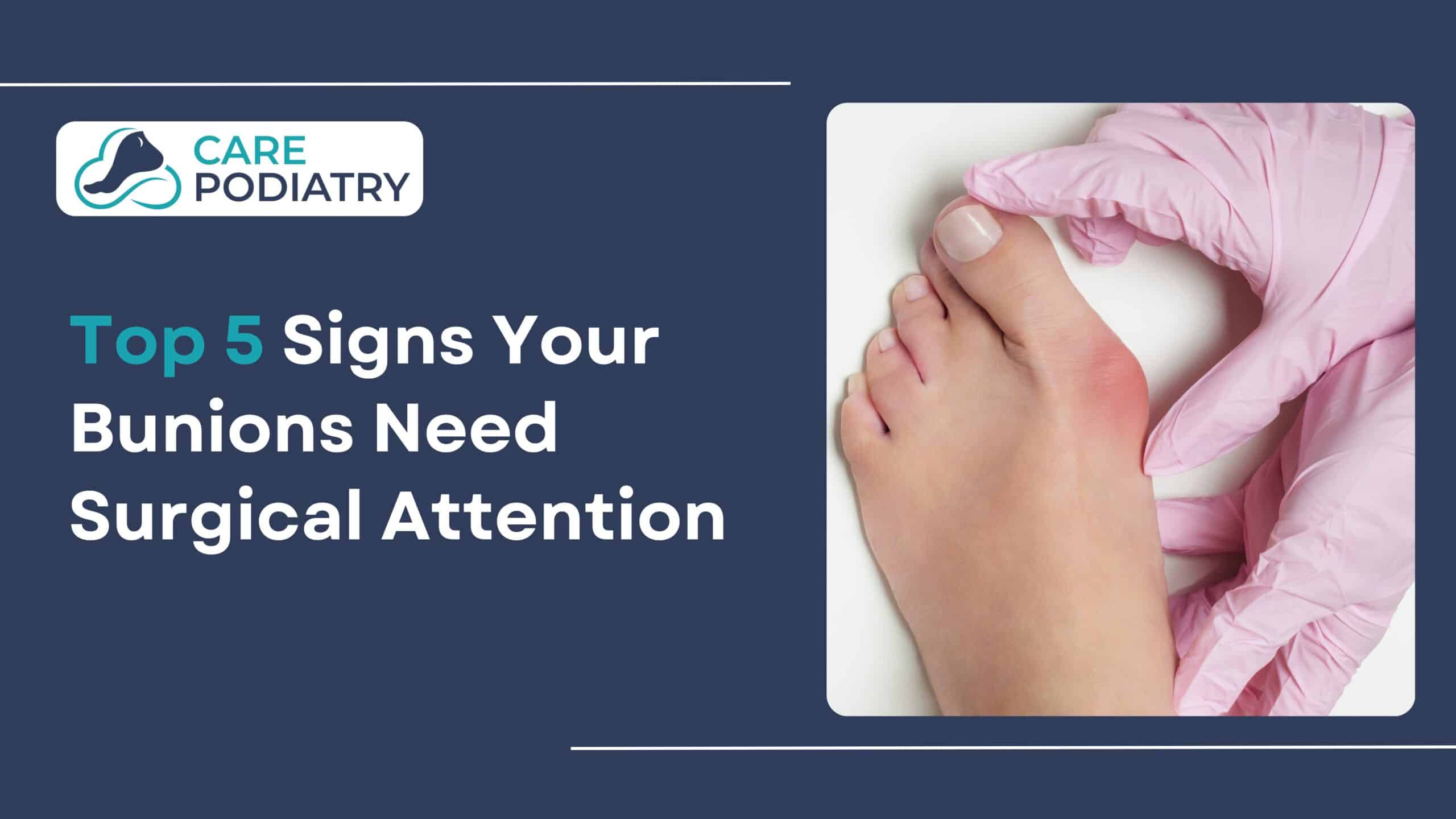Waking up with a sharp, stabbing pain in your heel like someone jammed a thumbtack under your foot overnight isn’t exactly the best way to start the day. If that first step out of bed feels like stepping on a nail, you’re not alone, and you might be dealing with a common but frustrating condition called plantar fasciitis. It’s one of the leading causes of heel pain, especially in the morning.
But is that really what’s behind your discomfort? If this sounds like you, you’re not alone and probably wondering what’s going on. In this article, we’ll break down what morning heel pain is, its causes, and its relationship with plantar fasciitis, to help you determine if it’s time to visit the experts.
What is Morning Heel Pain?
That first step out of bed can feel like walking on broken glass. But oddly enough, the pain often fades as you move around during the day, only to come back with a vengeance after you’ve been sitting for a while. Sound familiar
This pattern is actually a textbook sign of plantar fasciitis, one of the most common causes of heel pain in adults. This is often due to the plantar fascia, a thick and fibrous tissue band running along the bottom of the foot, getting irritated or inflamed.
It stretches from the heel bone to the toes and often behaves as a shock absorber. But when it’s overworked, it can occur in the morning.
So, Is It Really Plantar Fasciitis?
Chances are, yes. Plantar fasciitis is the number one reason people experience heel pain, especially in the mornings. Research from the American Academy of Orthopaedic Surgeons suggests that about 2 million people have plantar fasciitis and are treated for it each year. This number accounts for 11–15% of all foot symptoms requiring professional care.
The hallmark symptom is intense heel pain within the first few steps after waking up. Why? Because when you sleep, the plantar fascia tightens up. Then, when you stand, it stretches abruptly and ouch! That stretch irritates the already inflamed tissue. But it’s not the only possibility. Other causes of heel pain can include:
- Achilles tendinitis
- Heel spurs
- Stress fractures
- Bursitis
- Tarsal tunnel syndrome
Still, if your heel pain follows the pattern of “bad in the morning, eases with movement,” plantar fasciitis is a likely suspect. Only a trained podiatrist, like those at Care Podiatry, can diagnose you.
What Causes Plantar Fasciitis Anyway?
Let’s talk about triggers. Why does the plantar fascia get cranky in the first place? Here are the usual suspects:
1. Too Much Pressure
Whether you’re an athlete or just started a new walking routine, sudden increases in activity can strain the plantar fascia. Weekend warriors, take note.
2. Weight Gain
Carrying extra weight adds more stress to the arch of your foot, which means more work for your plantar fascia.
3. Poor Footwear
Shoes with no arch support (like those cute but evil flip-flops or old running shoes) can leave your feet unsupported. Over time, your plantar fascia rebels.
4. Flat Feet or High Arches
Your natural foot structure also plays a role. If your foot mechanics are off, the plantar fascia has to work harder than it should.
5. Tight Calf Muscles
Limited ankle mobility from tight calves can increase strain on your heel with each step.
Who’s Most at Risk?
You don’t need to be a marathon runner or ballet dancer to get plantar fasciitis. In fact, it commonly affects middle-aged adults, but it can occur in younger people too, especially those on their feet. Here’s a quick breakdown:
- Age (40–60): Tissue becomes less flexible with age.
- Obesity: Extra weight puts more pressure on the fascia.
- Jobs with Standing: Professions like teaching, nursing, or factory work involve being on your feet for long periods.
- Foot Mechanics: Conditions like flat feet, high arches, or abnormal gait can increase strain on the fascia.
- Repetitive Activities: High-impact activities such as running, dancing, or sports can lead to overuse of the foot structures.
Prevention: Keep That Pain from Coming Back
Once you’ve had plantar fasciitis, you don’t want it again. Trust us. Here’s how to prevent a recurrence:
- Keep your weight in a healthy range.
- Stretch your feet and calves regularly.
- Wear good shoes, even at home. Don’t cultivate the barefoot life!
- Replace old sneakers before they wear out.
- Use orthotics if you need them.
It’s all about reducing strain and giving your feet the support they need.
When to See a Podiatrist
If your heel pain has lasted more than a week or two, or if it’s affecting your day-to-day life, it’s time to call in the pros. At Care Podiatry, we specialize in foot and heel pain. Our podiatrists take the time to understand what’s going on with your feet and create a personalized treatment plan, whether you need stretching, orthotics, therapy, or advanced treatment. We believe no one should wake up in pain every morning, and we’re here to help you take the first step.
That’s A Wrap
Morning heel pain isn’t something you have to live with. Whether it’s plantar fasciitis or another foot issue, early treatment makes a huge difference. So don’t wait around hoping it’ll magically disappear. Let the expert team at Care Podiatry help you get back on your feet. Schedule a consultation today and let us take care of your feet so you can get back to doing what you love, pain-free.
Frequently Asked Questions
Is there a difference between plantar fasciitis and plantar heel pain?
Plantar fasciitis can cause tenderness or soreness of the sole under the heel. This sometimes can include the medial arch. The pain from this condition might result in poor health-related quality of life and substantial disability.
Does plantar fasciitis hurt every morning?
Plantar fasciitis pain usually hurts more in the morning since the injured area “tightens up” throughout the night. In the morning, when you put weight on your foot, you are basically “reinjuring” and “stretching” the area until you get accustomed to walking again.
How can I cure plantar fasciitis fast?
Individuals with plantar fasciitis can recover in some months via conservative treatment like stretching, icing the painful area, and staying away from or modifying activities that cause the pain.



